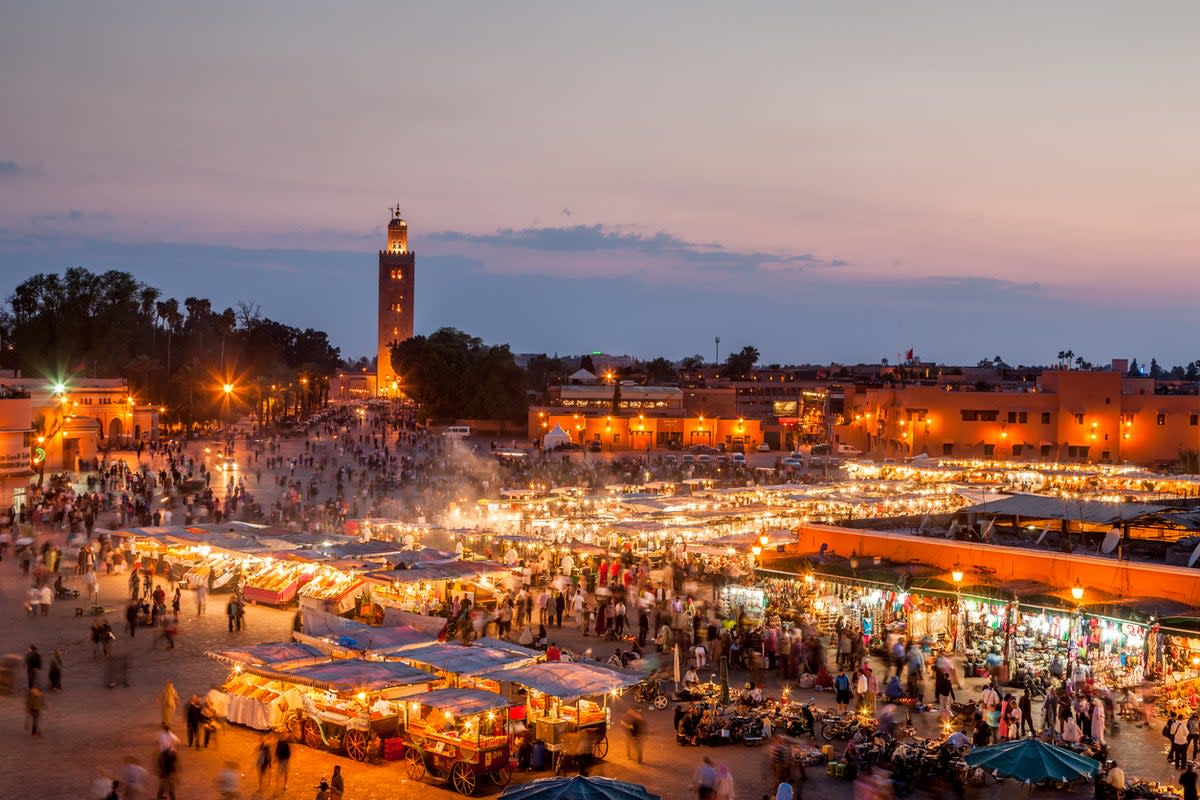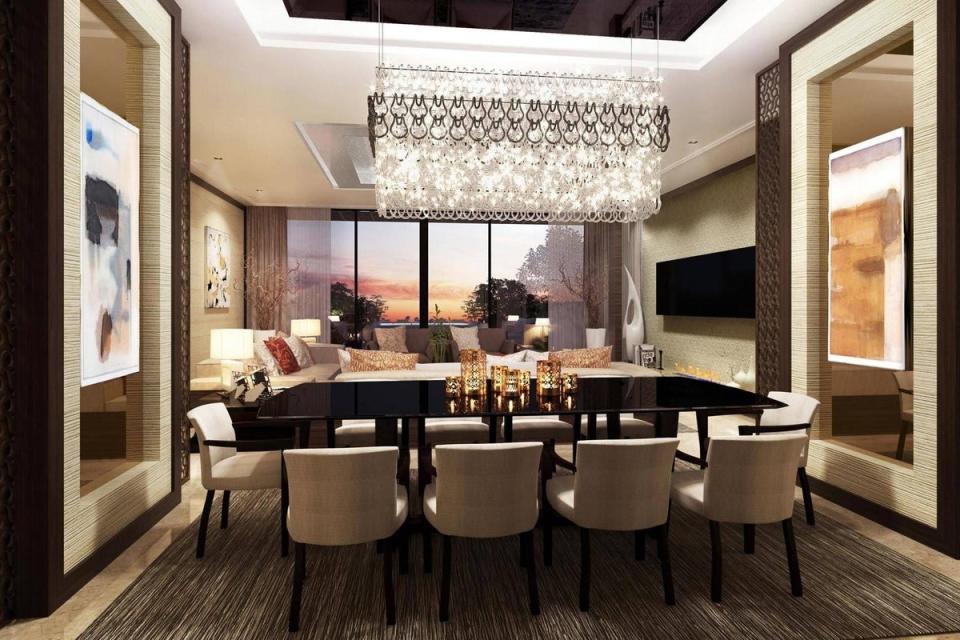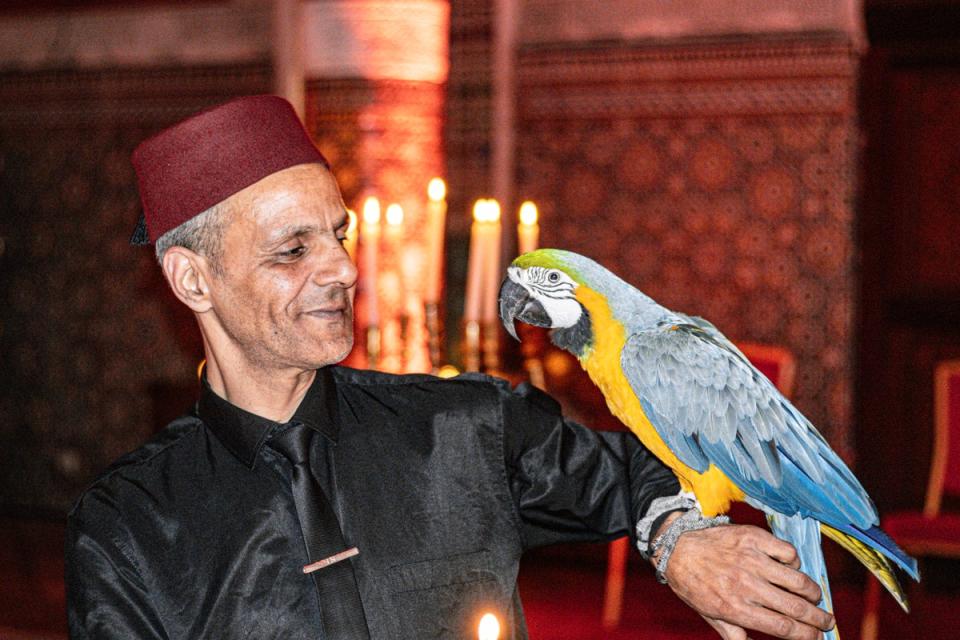The bustling African city four hours from London hoping to break records

Marrakech is a destination that wants to look forward.
Morocco’s Red City, famous for its history, gardens, and buzzing markets, has seen its share of recent upheaval.
In September 2023, as tourism was finally showing signs of returning to pre-Covid levels, a 6.8-magnitude earthquake struck just under 50 miles from the city in the Atlas Mountains. Roughly 3,000 people in the region were killed.
Much of the rubble that blocked the winding alleys of the 12th-century medina has now been cleared, but reminders still linger in the scaffolding and cracks in the walls along the market and fountains of the riad homes.
Visitor numbers to Marrakech dropped during the months that followed the quake, but they quickly returned. Ongoing conflict in the Middle East has also seen a decline in tourism, mainly from Israel and America; the full effect is still being counted.

Those whose job it is to help one of Morocco’s most famous holiday destinations move on say the tragedies will only make the next few years even stronger.
“We don’t look back, we look forward,’ Mountassir Boullal, director manager for Visit Marrakech, says over a glass of sweet mint tea. ‘We are a city for everyone and we want everyone to visit.
Read more on Morocco travel:
“Moroccans are some of the most welcoming people in the world. You can see that even from the way we pour our tea – from a great height. We want you to enjoy the hospitality, the theatre. Even over a glass of tea. We are proud that more people are seeing this hospitality every year.”
The city has adapted, he says. Once known as a backpacker’s destination, it has expanded into the luxury market and is now even pushing itself as a destination for digital nomads. New co-working spaces are opening every month across the city, although Morocco does not currently have a digital nomad visa.
Direct flights from Dubai to Marrakech Menara Airport are rumoured to be announced in the coming months.

“We have some of the world’s best hotels just a short walk away from hostels for under €20 a night,” Mountassir says, before going on to list the collection of A-list celebrities who have visited recently, from footballer Kylian Mbappe to former basketball player Michael Jordan. “I had tourism industry friends in other countries messaging me when Michael Jordan was seen on Instagram in Marrakech,” he adds. “They were very jealous.”
Mountassir points out that it is not just the city that’s changing; the surrounding area is building up its offering too. There are now more options than ever for those who want to explore beyond. Luxury retreats are popping up an hour drive away in the Agafay desert, and the tourism board is quick to point out the novelty of being able to ski in Africa. The snow-capped peaks of the Atlas Mountains can be seen from the centre of Marrakech.
Another sports star boosting luxury tourism is Cristiano Ronaldo. The former Real Madrid player has a branded hotel in one of the more modern districts, a short drive from the medina. The Pestana CR7 Marrakech opened in July 2016 in M Avenue, an outdoor shopping centre –or “retail experience”, as it describes itself.

Nowhere is more evident of a modernised Marrakech and its drive for luxury tourism than M Avenue. It hopes to entice those who prefer their shopping with more air-conditioning and less haggling than the markets around the Jemaa el-Fna square.
Opened at the end of 2021, the development is the brain-child of Nabil Slitine. The CEO spent years working in the US before coming home to Marrakech to head up the project. It was a chance meeting with Ronaldo during the UEFA Super Cup 2017 final that got the ball rolling for the Portuguese megastar to open his only hotel in Africa.
Nabil echos the idea that Marrakech is looking forward: “When I came back to the country I felt the city was missing something. You see the traditional side but tourism is always changing, people want to experience the old and new. We now offer that.
“In the past it felt some people left the city either overwhelmed or underwhelmed. I wanted people to see another side with new concepts and the modern architecture we are so proud of.”
He adds that he felt like his time with the project was set to come to an end, and how he was ready to take on new challenges elsewhere in Africa when the news of Morocco part-hosting the 2030 World Cup broke.
“How could I resist that challenge?”
The country will host the tournament alongside Spain and Portugal. Although the official grounds have yet to be confirmed, it’s a widely known secret that Marrakech will hold games in a renovated stadium. Plans are underway for a huge stadium in Benslimane, near Casablanca, and six others across the country will also be upgraded. Morocco’s government says it hopes to see 26 million visitors by 2030, with the buzz around the World Cup part of this ambitious goal.
A guide to Marrakech – luxury and on a budget
Marrakech is a city you can get lost in. Visit for a week and you will still feel like you have missed out on plenty. Here are just a few options, but arriving with no plans is also recommended.
Where to stay
Hostel prices start at £10 a night. Hostel Riad Marrakech Rouge is a well-positioned 85-bed hostel across two riads, which includes a shared kitchen area and courtyard often full with digital nomads and travellers enjoying the warm evenings.
Just beyond the old city walls is Nobu Hotel Marrakech. The luxury hotel overlooks the medina and is known for its rooftop pool, with bar and restaurant. A brief look at the hotel’s Instagram page shows a clientele of influencers and wealthier travellers. A live DJ performs remixes as guests order cocktails and film the sunset.
Where to eat
At the centre of the medina’s web of alleyways you will find Jemaa el-Fna square, with its sellers offering an array of delicacies. Options range from babbouche (a bucket of snail soup cooked in aniseed and thyme) to chicken skewers grilled over coal. But it is the sweets that the square is famous for; a sfinge (essentially a fresh doughnut coated in sugar) will set you back roughly 20p. A juice cart can be found on every corner and for cheap bites, you can’t really go wrong.
For authentic Moroccan cuisine close to the square, Casa Lalla is popular with both tourists and locals. Inside a revamped riad – so quiet you forget the busy streets are just outside – the kitchen serves traditional dishes with some modern takes. Chicken pastilla, a large round pie that combines savory and sweet within flaky filo pastry topped with almonds, is recommended; other variations include seafood and pigeon.
Palais Soleiman, a taxi away from the centre, is high up on any luxury tour guide’s list. The palace is one of the city’s most impressive buildings, topped with finely sculpted domes and walls covered with coloured zelliges tiles and lace. Alongside live music and live parrots the restaurant is famous for – you guessed it – tagines and salads; try zaalouk, a traditional aubergine salad heavy with cumin and paprika, with notes of garlic, parsley, lemon juice and olive oil.

If you want to try something a little less traditional, Nobu Hotel includes an award-winning sushi bar that the brand is famous for. Tuck into the black cod miso speciality on the Japanese-Peruvian menus around the hotel’s open-air restaurant and enjoy a game of spot the celebrity.
Where to visit
A whole day can easily be spent in the medina, haggling with local traders for pottery, jewellery, rugs and more. But Marrakech is also famous for its gardens. The Jardin Majorelle was designed by French painter Jacques Majorelle in the 1920s. The stunning villa and botanical gardens are influenced by Art Deco and Moorish design with Majorelle known for his use of the famous cobalt shade now referred to as Majorelle blue. The garden is a series of ponds and pathways edged by cacti, succulents, palm trees and bamboo.
In 1980 the designer Yves Saint-Laurent took over the villas and perched on the edge of the garden is YSL Marrakech. The museum celebrates the life of the Algerian-born designer. Long walls are illustrated with images of the designer, his campaigns, muses, and other inspirations. Le Jardin Secret will also impress even the least green-fingered visitor, but be warned it gets very busy and tickets should be booked ahead of time.
Monde des Arts de la Parure is a museum showing a private collection of jewels from around the world. The air-conditioned building, housing 3,000 objects, is worth a visit if you want to escape the bustle and heat of the streets for a good hour. Shams restaurant can be found on the roof of the museum. Its reasonably priced menu offers a mix of local, Levantine and Mediterranean dishes.
Bahia Palace, a 19th-century palace built by a former slave-turned-prime minister of the ruling sultan, is also worth the short walk from the main square. Dating back to 1859 the building is a series of stunning courtyards and halls showcasing the traditional colours and designs Morrocco has become known for.

Day trips
If getting lost between the markets and museums before rooftop cocktails doesn’t do it, then Marrakech is a city keen to help you explore its outskirts.
The Agafay desert is an hour away by taxi. Here, camels and quad bikes wait for those who want a bit more of an adventure in their holiday. The White Camel camp offers visitors a day or more with an infinity pool, along with local food and star gazing. A day pass starts at €95 (£82) and a day and night in a nomadic tent costs €329 (£283).

When to visit Marrakech
Morocco has a warm climate for most of the year but many tourists visit during Europe’s winter, running to the sun between October and February. The city is known as a year-round destination but June is the driest month and March the wettest; locals suggest visiting at new year.
Rich Booth travelled as a guest of Wizz Air.
The airline offers flights from the UK to Marrakech Menara Airport. Currently, return flights depart three times a week from London Gatwick; prices start at £21.99 each way.

 Yahoo News
Yahoo News 
